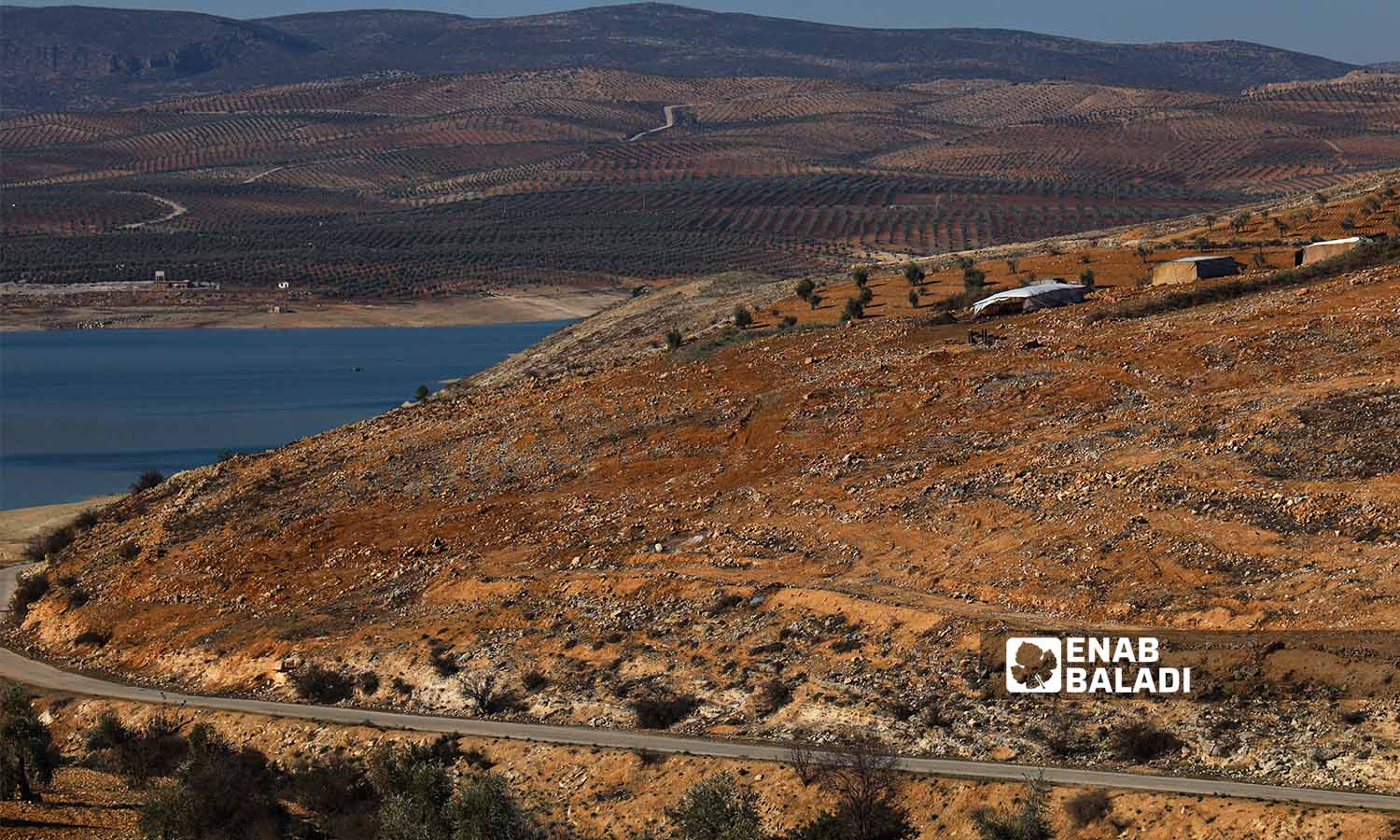



Satellite images showed a sharp decline in green areas in the vicinity of Lake Maydanki on the Afrin River in Aleppo, northern Syria, due to the continuous wave of logging and the increasing cutting of forest trees to use firewood as a means of heating.
The logging and tree-cutting operations around the lake are managed by fighters from the Shuhada al-Safira Brigade of the Sultan Murad Division of the Syrian National Army (SNA), which controlled the area in March 2018.
The lake, which is also called the April 17 Dam Lake, extends over an area of about 14 Km2, 70 kilometers from the city of Aleppo and 12 kilometers from the town of Afrin, near the village of Maydanki overlooking the Afrin River.
The water catchment area in the village is 527 m2, and the average annual precipitation ranges between 330 and 700 mm.
Since the National Army took control of Afrin, local authorities and military institutions have warned against logging forest trees in the region and its countryside under penalty of accountability and the confiscation of any vehicle loaded with firewood, and the arrest and accountability of the responsible party, but this did not stop or reduce the pace of logging, which rises before the winter of each year.
Enab Baladi quoted local sources, who spoke on condition of anonymity due to security concerns, that the price of one ton of firewood logged from the Maydanki forests is no less than $140 per ton.
Previously, photos were also published showing the decline of green spaces in the region, along with satellite images published by the Environmental Justice Atlas last February.
Enab Baladi contacted the spokesperson of the Syrian National Army to obtain clarifications about the position of the “army” that controls the area regarding logging operations, but it did not receive any response until the publishing of this article.
Excessive logging also affects trees in the wooded forests around Afrin, on the small island within the lake, and in the regions of Sharran and Sheikh Hadid.
There are no accurate official statistics on the damage caused by logging operations in the region.
Engineers working in the Forestry Division in Afrin estimated that the damage to forest wealth over four years exceeded 50% of the total forest areas in the region before logging operations during the current year.
Forests are also victims of wars and prolonged military operations, as their trees can be cut down for heating, or the area can be used for military purposes, in addition to displacement movements that deepen the level of needs within a narrow area.
However, this process leaves an impact on the environmental level that cannot be treated or restored easily, in addition to threats to disrupt the ecosystem in the region.
Zaher Hashem, a Syrian journalist specializing in environmental issues, told Enab Baladi that the unjust felling of trees affects people’s lives and health, given the great benefits achieved by trees, such as providing clean air and contributing to reducing climate change, as one tree can absorb about 150 kilograms of carbon dioxide annually.
Planting trees in cities contributes to purifying the air of pollutants and fine particles that harm the respiratory system, provides some types of food such as fruits and nuts, regulates the flow of water, and improves its quality.
Trees also maintain soil cohesion, prevent erosion, reduce dust storms, and improve physical and psychological health.
Regarding the impact of logging on biodiversity, Hashem explained that forests are home to about 80% of biodiversity, which makes logging a threat to the organisms that live in forests by losing their habitat, and some organisms become vulnerable to predation as a result.
Logging also threatens the extinction of some organisms as a result of the loss of their food.
In addition, restoring the environmental landscape and treating the damage caused by the logging phenomenon requires a long time, as forests need decades to recover, depending on the age of the trees, the speed of their growth, depending on genetic differences, the surrounding conditions, and the intensity of afforestation.
Some trees may need more than 70 years to reach their previous condition before the cutting period, but even with some fast and medium-growing species, the recovery period is at least 10 to 25 years, according to the environmental journalist.
Hashem recommends, in order to accelerate the pace of recovery, to plant trees continuously in cut-off areas and in areas that are exposed to fires as well, taking into account the types that are compatible with the surrounding environmental conditions, such as drought or lack of water resources.
He concludes, fire protection measures, observation points, and early warning techniques should be strengthened in forest areas and nearby residential areas, and illegal logging should be stopped first.
if you think the article contain wrong information or you have additional details Send Correction